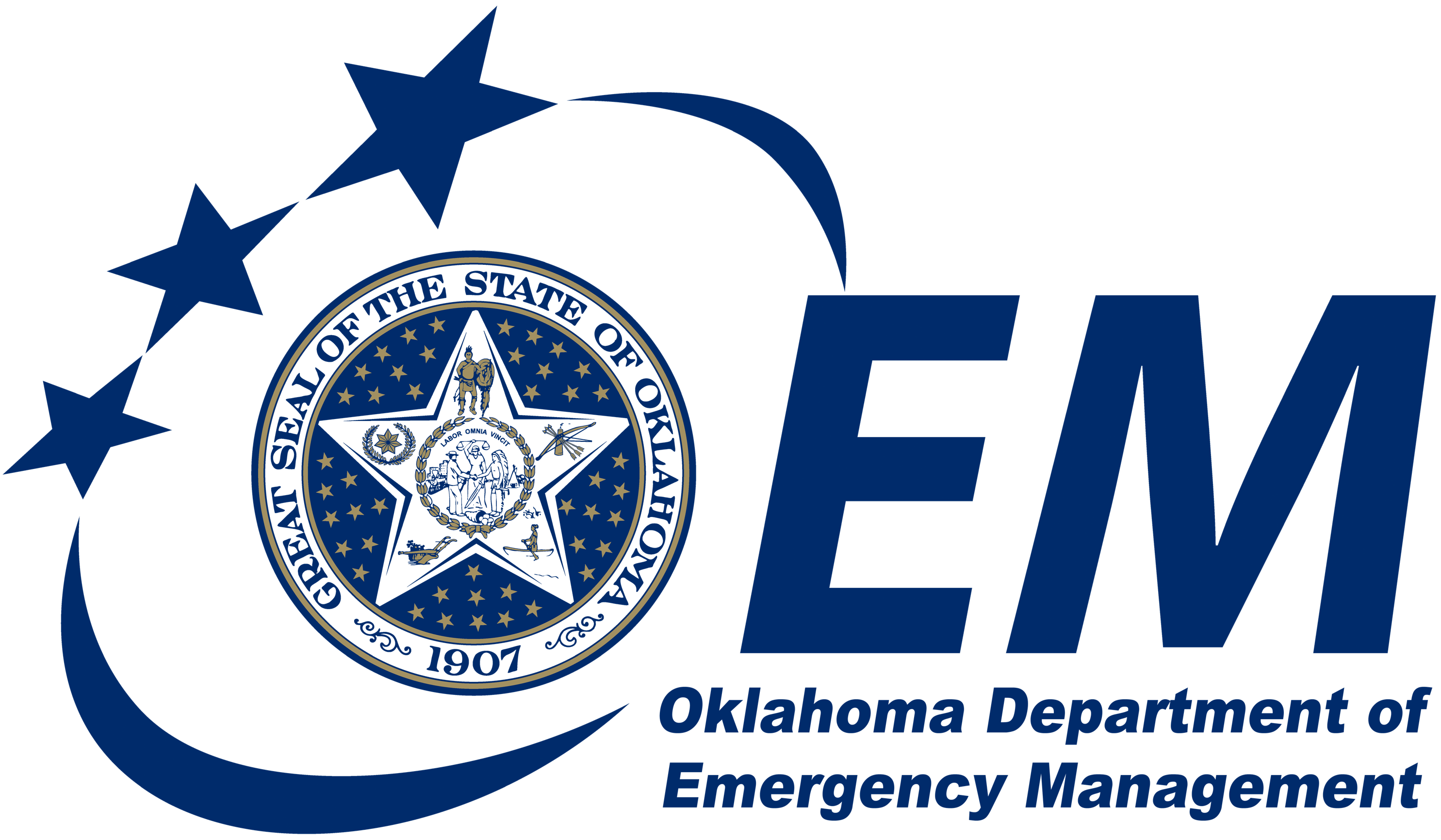Situation Update 3
Oklahoma Department of Emergency Management
Situation Update 3
May 2, 2019 – 5:30 p.m.
SEVERE WEATHER IMPACTS STATE
As a result of ongoing severe weather response and recovery efforts, the State Emergency Operations Center remains activated. The Oklahoma Department of Emergency Management (OEM) is in contact with emergency managers across the state and coordinating with agencies and organizations including the Oklahoma Highway Patrol, Oklahoma Corporation Commission, Oklahoma State Department of Health, Oklahoma National Guard, Oklahoma Office of Homeland Security, Oklahoma Department of Transportation, Oklahoma Department of Agriculture, Food and Forestry, Oklahoma Insurance Department, Oklahoma Department of Environmental Quality, National Weather Service, Oklahoma American Red Cross, the Salvation Army, Oklahoma Baptist Disaster Relief and the Oklahoma Voluntary Organizations Active in Disaster.
STATE OF EMERGENCY
State of Emergency remains in effect for 52 Oklahoma counties due to severe storms, tornadoes, straight-line winds, and flooding that began Tuesday. Under the Executive Order, state agencies can make emergency purchases and acquisitions needed to expedite the delivery of resources to local jurisdictions. The declaration also marks a first step toward seeking federal assistance should it be necessary.
The counties included in the declaration are: Adair, Atoka, Bryan, Canadian, Carter, Cherokee, Choctaw, Cleveland, Coal, Comanche, Cotton, Craig, Creek, Delaware, Garvin, Grady, Haskell, Hughes, Jefferson, Johnston, Latimer, Le Flore, Lincoln, Logan, Love, Marshall, Mayes, McClain, McCurtain, McIntosh, Murray, Muskogee, Nowata, Okfuskee, Oklahoma, Okmulgee, Osage, Ottawa, Pawnee, Payne, Pittsburg, Pontotoc, Pottawatomie, Pushmataha, Rogers, Seminole, Sequoyah, Stephens, Tillman, Tulsa, Wagoner, and Washington.
INJURIES AND FATALITIES
Oklahoma Office of the Chief Medical Examiner reports two fatalities attributed to the storms.
Male, 55 years old, Tulsa
Female, 58 years old, Bokchito
According to the Oklahoma State Department of Health:
- 22 injuries have been reported by area hospitals as a result of storms in southeast Oklahoma on April 30.
- 10 injuries have been reported by area hospitals as a result of storms in southern Oklahoma on May 1.
DAMAGE REPORTS
Damage assessments are ongoing in the impacted areas.
Durant/Bryan County Emergency Management reports nearly 50 homes were damaged in the Blue area.
Pittsburg County Emergency Management reports approximately 60 homes and businesses were damaged in the Haileyville area.
MASS CARE
Residents who need assistance with chainsaw or debris removal may contact Oklahoma Baptist Disaster Relief at (405) 516-4822 or www.okdisasterhelp.org/request-assistance.
The Oklahoma State Department of Health reports nurse strike teams are providing tetanus shots in Atoka County and Pittsburg County. Teams gave 30 tetanus shots in Lane on Wednesday and 55 tetanus shots in Haileyville on Wednesday and Thursday.
Nurses will be in Haileyville again on Friday.
POWER OUTAGES
The Oklahoma Association of Electric Cooperatives report 155 outages at Electric Cooperatives statewide.
Southeastern Electric Cooperative: Total – 102 in Atoka and Bryan counties
Kiamichi Electric: Total - 26
Central Electric: Total - 10
ROAD CONDITIONS
Oklahoma Department of Transportation reports the following highways are closed due to flooding as of 4 p.m.:
Cherokee County - SH-80 is closed four miles west of Hulbert near Fort Gibson Lake
Delaware County- SH-127 is closed near Jay just west of US-59 due to a damaged drainage structure
Johnston County- SH-48A is closed at the SH-48 junction in Coleman; SH-48A is closed two miles north of Milburn.
Love County- SH-77-Scenic is closed at Lake Murray Spillway
Pittsburg County- SH-63 is closed between Haileyville and Bache Rd.
To check current road conditions in Oklahoma, visit www.okroads.org.
REPORT DAMAGE ONLINE
Oklahoma Department of Emergency Management continues to ask residents impacted by the April 30 storms to report damages to their property at damage.ok.govor by calling (405) 496-9329. Reporting damage helps local and state emergency managers better coordinate response and recovery efforts. Residents can report damage to homes, businesses or agriculture through the online survey.
HOW TO HELP – DONATION INFORMATION
When disaster strikes, the best way to support survivors of emergencies or disasters in Oklahoma is with cash donations to reputable voluntary organizations. Cash donations allow relief organizations or survivors to purchase what they need, when and where they need it. Buying supplies locally helps the local community recover by helping local businesses pay salaries and by keeping tax revenues in the community.
Other donated items are not needed or requested by local officials at this time. Do not send unsolicited donations of used clothing, miscellaneous items or perishable foods, which must be sorted, warehoused, transported and distributed. This requires more efforts and staffing to manage those resources and takes away from recovery efforts.
CLEAN UP SAFELY AFTER THE STORM
The Oklahoma State Department of Health (OSDH) reminds residents to take safety precautions when cleaning up after a disaster as injuries often occur during cleanup. The following tips are recommended by the Centers of Disease Control and Prevention (CDC).
- Keep children and pets out of the affected area until cleanup has been completed.
- Wear rubber boots, rubber gloves, and goggles during cleanup of affected area.
- Remove and discard drywall and insulation that has been contaminated with sewage or flood waters.
- Thoroughly clean all hard surfaces (such as flooring, concrete, molding, wood and metal furniture, countertops, appliances, sinks, and other plumbing fixtures) with hot water and laundry or dish detergent.
- Help the drying process by using fans, air conditioning units, and dehumidifiers.
- Wash all clothes worn during the cleanup in hot water and detergent. These clothes should be washed separately from uncontaminated clothes and linens.
- Wash clothes contaminated with flood or sewage water in hot water and detergent. It is recommended that a laundromat be used for washing large quantities of clothes and linens until your onsite waste-water system has been professionally inspected and serviced.
Mold can be recognized by discoloring of walls and ceilings. There may also be a noticeable foul odor such as a musty, earthy smell. It is recommended to remove all porous items that have been wet for more than 48 hours and that cannot be thoroughly cleaned and dried. These items can remain a source of mold growth and should be removed from the home. Porous, non-cleanable items include carpeting and carpet padding, upholstery, wallpaper, drywall, floor and ceiling tiles, insulation material, some clothing, leather, paper, wood, and food. Removal and cleaning are important because even dead mold may cause allergic reactions in some people.
EMERGENCY PRICE STABILIZATION ACT IN EFFECT
Attorney General Mike Hunter today announced the state’s price gouging statute is in effect for the 52 counties named in the governor’s state of emergency declaration. The Emergency Price Stabilization Act prohibits an increase of more than 10% for the price of goods and services after a declared emergency. The statute triggers automatically after the governor issues a state of emergency. The law allows the attorney general to pursue charges against individuals or businesses that engage in price gouging.
For more information or to report a complaint, individuals can contact the Attorney General’s Consumer Protection Unit by phone at (405) 521-2029, or email at consumerprotection@oag.ok.gov. Download the Attorney General’s Disaster Scam Prevention Packet here: https://bit.ly/2GUNYU0.
DIAL 211
For Oklahoma residents seeking non-emergency disaster or health and human service information, please contact your local 2-1-1. Services are available 24 hours a day by dialing 2-1-1 from your home or cellular telephone. Please only call 911 for emergencies.
###


